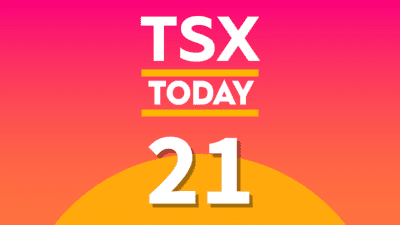On Monday, the TSX-listed shares of Shaw Communications (TSX:SJR.B)(NYSE:SJR) jumped by 46% to $28.01 per share. These massive gains came based on the news of its rival Rogers Communications’s (TSX:RCI.B)(NYSE:RCI) bid to acquire Shaw came out. The news about the deal also triggered a buying spree in Rogers stock this morning, as it rose by more than 5%. Let’s take a closer look at some key details about the deal before discussing whether it could face any regulatory hurdles.
Rogers Communications’s bid to acquire Shaw Communications
On March 15, the Canadian telecom giant Rogers Communications revealed its intentions to acquire its smaller home market peer Shaw Communications in a $26 billion deal. According to the signed agreement between the two companies, Rogers will acquire all issued and outstanding shares of Shaw for $40.50 per share at a premium of nearly 70% from its Friday closing. Acquiring these shares would translate into a $20 billion cash transaction. The cash transaction — along with Shaw’s about $6 billion debt — would make the deal worth $26 billion. Rogers has already secured financing to cover the cash transaction cost.
If the deal goes through, the Shaw family will become one of the largest shareholders in Rogers Communications. The combined company — headquartered in Calgary — would become the second-largest Canadian telecom firm by revenue after BCE.
Focus on accelerating growth
The proposed deal is likely to accelerate the 5G infrastructure development by the combined business entity. After the deal, Rogers plans to invest $2.5 billion to build the 5G network in Western Canada. Rogers Communications had already launched its 5G network in Canada slightly more than a year ago — making it the first company with a 5G network in the country. In contrast, Shaw was still trying to finalize its strategy to benefit from the upcoming 5G boom with a long-term approach.
While Shaw hasn’t paid as much attention to benefit from the 5G network as Rogers, its latest earnings trend looks stable, despite the recent COVID-19 headwinds. That’s one reason why I recommended investors to buy its stock in January. Overall, Shaw’s strong existing cable, fibre-to-home, and wireless networks should help Rogers significantly expand its market share.
Will the deal face regulatory hurdles?
Rogers’s bid to acquire Shaw might have to go through a strict regulatory review process as its approval might lower the competition in the Canadian telecom space. Canadian Industry Minister Francois-Philippe Champagne said that the government review process would focus on “greater affordability, competition, and innovation in the Canadian telecommunications sector” — keeping consumers’ interests in mind at the same time.
While it’s too early to speculate on the review’s outcome, I expect the deal to ultimately get the government’s approval, as it would help create more jobs and improve the country’s 5G infrastructure. Notably, Rogers expects its $2.5 billion 5G-related investments after the deal to create up to 3,000 net new jobs.
Also, the Rogers-Shaw merger would give birth to another powerful cellular operator in Canada that would be in a better position to compete with other big operators like Telus Communications and BCE. That’s why it might not really hurt the competition. From investors’ perspective, the proposed deal would make Rogers Communications’ stock even more attractive — especially for the long-term investors.








